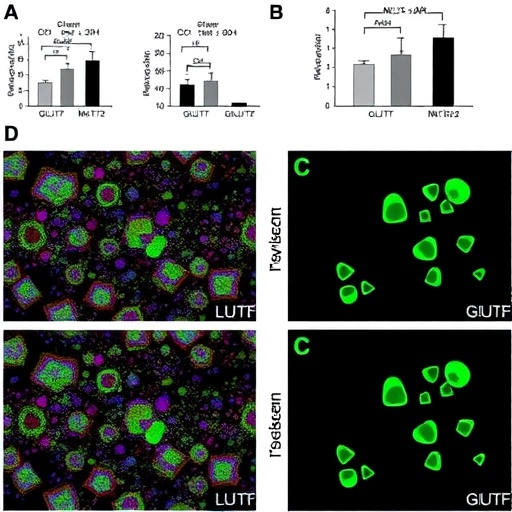The landscape of prostate cancer diagnosis and management has undergone a remarkable transformation over the past few decades, with prostate-specific antigen (PSA) testing emerging as a cornerstone of this evolution. The comprehensive study by Mutalip, Barth, Sellers, and colleagues, recently published in Medical Oncology (2025), provides an in-depth exploration of PSA testing’s journey from early research settings to its widespread clinical adoption—and contemplates a future shaped by cutting-edge technological and biochemical advancements.
PSA testing was initially a novel biomarker discovery, heralded for its potential to revolutionize prostate cancer detection. Originally identified as a prostate-derived serine protease, prostate-specific antigen enabled clinicians to measure cancer-associated activity in the bloodstream, offering a minimally invasive diagnostic tool compared to traditional biopsy. The early trials paved the way for PSA screening to become commonplace, dramatically shifting prostate cancer diagnostics towards earlier detection and intervention.
Despite PSA testing’s unparalleled impact, the path from bench to bedside was fraught with challenges. Early on, the specificity of PSA levels was called into question, as benign prostatic hyperplasia and prostatitis could also elevate PSA concentrations. This overlap led to an increase in false positives, resulting in unnecessary biopsies and overtreatment. The research community turned its focus toward distinguishing between indolent and aggressive tumors, a crucial step in curbing the harms of overdiagnosis.
Over time, the advent of refined biochemical assays and the integration of PSA kinetics—such as PSA velocity and PSA doubling time—enhanced the predictive accuracy and clinical utility of PSA testing. These kinetic measures allowed clinicians to interpret PSA changes over time rather than relying solely on absolute values, thus improving prostate cancer risk stratification. Mutalip et al. emphasize how such advancements underscored the dynamic nature of PSA as a biomarker, rather than a static measurement.
The study further highlights the transition from single-marker PSA testing toward more comprehensive diagnostic panels. The development of tests incorporating PSA isoforms, such as the free-to-total PSA ratio and the [-2]proPSA precursor form, has improved the specificity and reduced unnecessary interventions. These biomarkers provide a more nuanced biochemical fingerprint, allowing physicians to differentiate malignant from benign conditions more reliably than total PSA alone.
Importantly, the authors note the rise of multi-parametric magnetic resonance imaging (mpMRI) techniques, which have synergistically paired with PSA testing to refine prostate cancer diagnostics further. By providing detailed anatomical and functional information, mpMRI reduces false-negative biopsy rates and facilitates targeted biopsies, enhancing early detection precision. The complementary relationship between imaging and serum biomarkers epitomizes the multidisciplinary future of prostate cancer diagnostics.
From a technological standpoint, the future envisioned by Mutalip and colleagues hinges on integrating artificial intelligence (AI) and machine learning algorithms into PSA testing workflows. These computational models are designed to assimilate vast datasets from PSA dynamics, genetic profiles, imaging results, and clinical histories. Such AI-driven platforms aim to deliver personalized risk assessments that transcend traditional statistical models, offering tailored therapeutic pathways for individual patients.
Moreover, the article illuminates potential advances in liquid biopsy techniques which may dramatically shift PSA testing’s paradigm. Circulating tumor cells (CTCs), cell-free DNA (cfDNA), and exosomal microRNAs circulating in the blood represent non-invasive molecular signatures that could augment or even supplant PSA assays. The authors suggest these emerging biomarkers will offer real-time insights into tumor heterogeneity, progression, and treatment response, cultivating a new era of precision oncology.
Emphasizing the clinical implications, Mutalip et al. discuss how PSA testing continues to inform decision-making at multiple stages—from screening asymptomatic men at risk, to monitoring treatment efficacy, and detecting biochemical recurrence. Notably, the study critiques past population-wide PSA screening strategies, acknowledging the controversies and calls for risk-adapted screening protocols that minimize harms and optimize benefits.
The authors make a compelling case for future clinical trials that combine multi-modal biomarkers with imaging and genomic profiling to refine prostate cancer management. This integrative approach acknowledges the complex biology underlying prostate carcinogenesis and the limitations of relying on a single parameter. As precision medicine advances, PSA testing will function as a critical component within a broader diagnostic and prognostic ecosystem.
In evaluating the broader societal impact, the article underscores disparities in access to PSA-based diagnostics and emerging technologies, which may exacerbate health inequities. Addressing these concerns, the authors advocate for equitable distribution of innovations, community engagement, and education to ensure the benefits of advanced prostate cancer detection reach diverse populations globally.
Mutalip and colleagues conclude by envisioning a future where PSA testing is not simply a diagnostic check box but a dynamic, multi-dimensional tool integrated into personalized health monitoring. Emerging wearable biosensors, continuous biomarker tracking, and telehealth platforms could transform PSA surveillance from episodic screening into real-time, patient-centered care paradigms.
Ultimately, this thorough review contextualizes PSA testing not only as a pivotal clinical tool but as a trajectory that mirrors broader themes in oncology: the quest to balance early detection with overtreatment, the integration of biomarkers and imaging, the rise of computational analysis, and the commitment to health equity. As such, prostate-specific antigen testing exemplifies the evolutionary journey of cancer diagnostics—underscoring the complexity of translation from laboratory discovery to bedside impact, and illuminating a path forward driven by innovation and precision.
For clinicians, researchers, and patients alike, the evolution of PSA testing embodies hope rooted in scientific rigor and technological advances. With ongoing research efforts and thoughtful clinical integration, the next chapter of PSA’s history promises to further diminish prostate cancer mortality while enhancing quality of life—bringing the promise of precision oncology from theory into everyday practice.
Subject of Research: Prostate-specific antigen (PSA) testing and its role in prostate cancer diagnosis and management.
Article Title: From bench to bedside: the evolution and future of prostate-specific antigen testing.
Article References:
Mutalip, I.W., Barth, A.F., Sellers, G.S. et al. From bench to bedside: the evolution and future of prostate-specific antigen testing. Med Oncol 42, 486 (2025). https://doi.org/10.1007/s12032-025-03041-4
Image Credits: AI Generated




